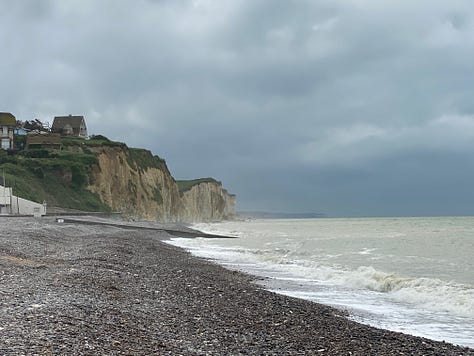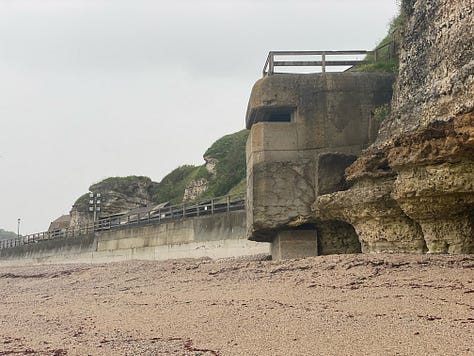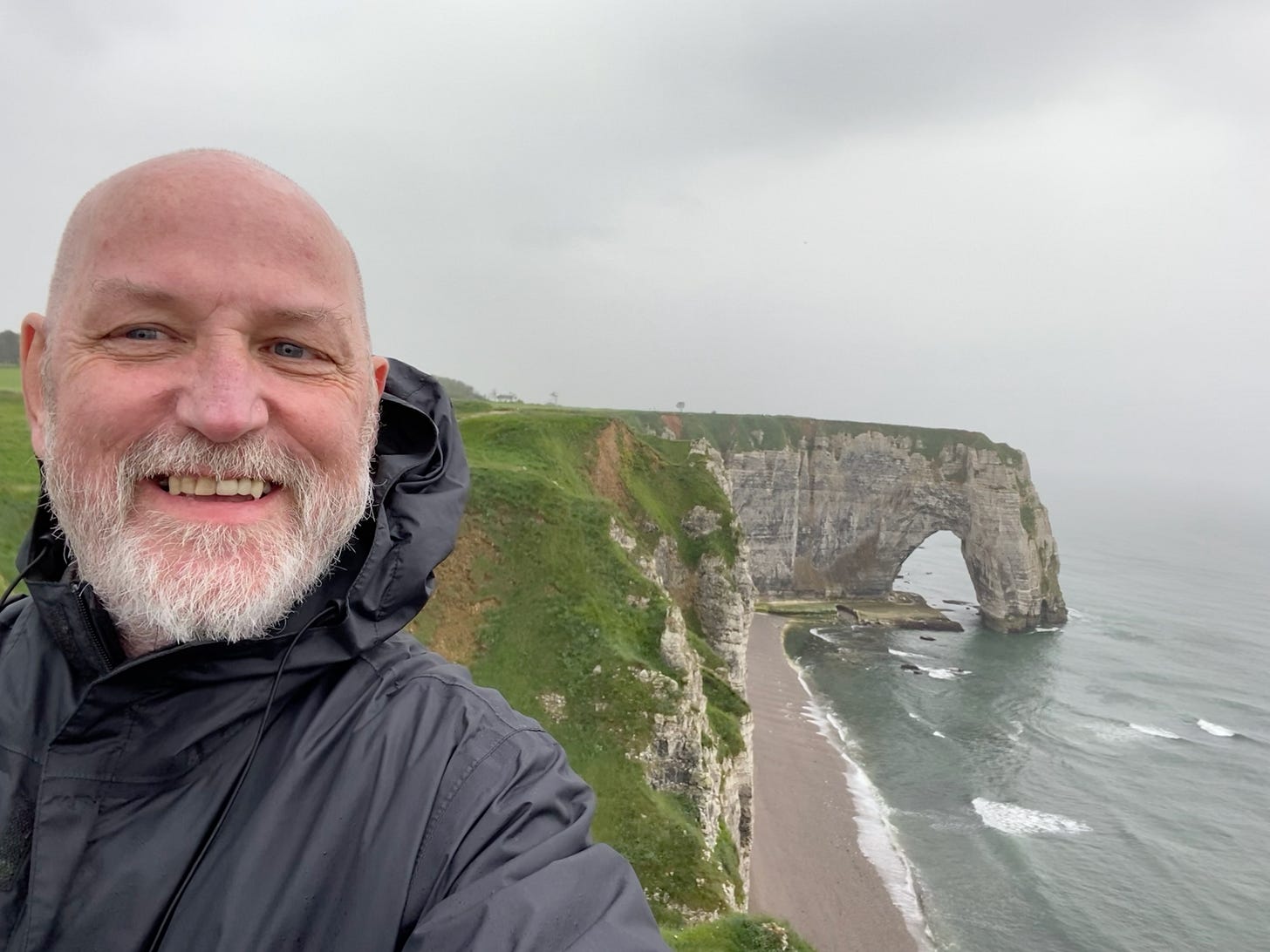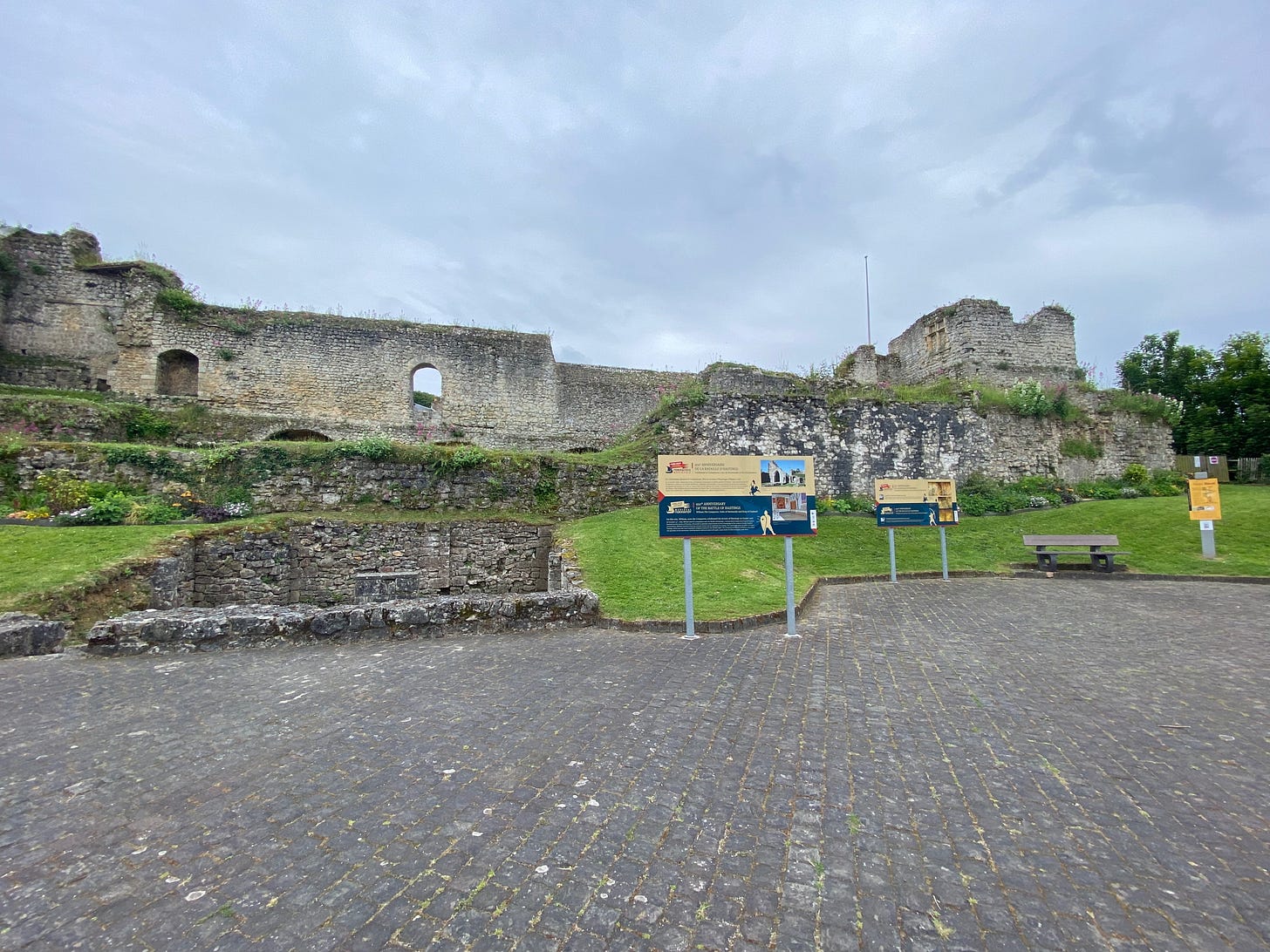Inspiration sur-la-mer
A detour down the Normandy coast takes me to the Fécamp hometown of William the Conquerer and the iconic cliffs of Étretat.
The rough Normandy coast has attracted artists, fishers and visitors of every imaginable stripe since, well, probably since the stone age. Massive white chalk cliffs loom over the often stormy seas of the English Channel, testimony to the force of nature as winds and waves have for millennia carved their signatures on the stone walls of the French coast.
This intimidating array of natural barriers made it somewhat easier for the occupying Germans in the Second World War to build the Atlantic Wall, a 2687-km array of coastal defences and fortifications stretching from Norway to Spain. But in times of peace, the Normandy coast is peppered with sand and pebble beaches in quaint country towns and villages with names like Saint-Valery-en-Caux, Fécamp and Étretat.



The aforementioned were on the scenic route that I had decided to take on my return to Caen after visiting the Canadian War Cemetery in Dieppe in late May. None of these beaches would see much action in the Battle of Normandy, since the Allied forces had landed some 200 km to the south-west. So though many German bunkers and fortifications still give witness to the war, this part of the French coast would be liberated only after the Germans had fled in late August. As such, I didn’t see the parade of pennants and American, British and Canadian flags that I saw elsewhere in Normandy, tho the town of Fécamp had planned a small tribute on the 80th anniversary of its liberation.
Fécamp is no stranger to war, however. Fécamp Castle hosted a lavish party after its native son, William the Conquerer, defeated the Anglo-Saxons at Hastings in 1066, launching the Norman conquest of England. And when Charles II of England was defeated by Cromwell 600 years later, it was to Fécamp that he would flee.
There’s not much left of the castle, home to the dukes of Normandy since the 10th century, but the 11th century Abbaye de la Trinité de Fécamp, a Benedictine centre of religious and political power right up until the French Revolution, remains a revered holy site for pilgrims and an architectural and historic attraction of immense beauty and significance.






Some 16 kilometres west of Fécamp lie the cliffs of Étretat, one of the most photographed sites along the coast and the subject of many French painters, including Claude Monet. Its three natural arches and a jutting rock known as the Needle make it immediately recognizable, and trails to the top of the cliffs make it a popular spot for hikers. It even attracts surfers on a cold and rainy day in May, much to my surprise.








Fooled by a bird!
⚜ ⚜ ⚜
When I began this big adventure late last summer, I had some vague notion that it might be a good idea to write a blog about my travels. So I found a blogging tool/platform called Substack that would make it relatively simple to post my stories while exploring, then wrote my first post, explaining why I was hitting the road.
Then I posted a link on Facebook and went to sleep.
I was astounded the next morning to find that two people who had read that first blog had also clicked on a box that Substack uses to encourage readers to contribute financially to their favourite writers with paid subscriptions. It hadn’t even occurred to me to monetize the blog, but here were two readers who had pledged to support me should I decide to go that route.
One of them, François Giguère, had written me to say, “Salut Peter, Toulouse est superbe. Je te souhaites d'y avoir beaucoup de plaisir. Merci de faire ce superbe projet. Te suivre m'aidera à certainement à composer avec la vie quotidienne.”
I’ve known François since our days as young student rabble-rousers and more recently through his work as a housing activist. Even though our contact had been sporadic over the years, he has always been a kind and supportive friend. So with his unsolicited financial commitment in my inbox, I decided to make Sixty-something Solo a subscription-based blog, tho I kept a free option for people who didn’t want to or couldn’t commit any funds.
François, like my second sponsor, Helen Edwards, felt that my blog would allow him to travel vicariously with me. As Helen wrote, “I really want to support you because I think what you’re doing takes courage at our age, and I look forward to reading about your adventures in some countries I have visited and others I still hope to. Have a blast Peter.”
What I didn’t know until this week was that François was no longer able to enjoy the type of adventure I was living, since he was fighting lymphoma. The year I spent travelling would be the last year of his life. I learned this week that François Giguère had died on Monday, peacefully and surrounded by family.
As a housing activist, François had positively affected the lives of many, many people over the years in ways both evident, such as helping them find or keep affordable housing, or subtle, by letting people know they were not alone in their struggles.
In his simple gesture of reaching out to encourage a friend, François had changed the nature of my blog and, consequently, the entire trajectory of my travels. By raising it to a professional endeavour, no matter how modest the remuneration, the blog became my motivator, my catalyst and my inspiration. It was something I felt I owed to my subscribers, free or paid: a commitment to seek out and share stories and experiences that would allow them to feel they were travelling with me.
I hope my stories truly were a salve as he struggled with a vie quotidienne that was much more challenging than I ever could have imagined. I know his support made a huge difference in mine.
Au revoir, François.
⚜ ⚜ ⚜
See you the rest of you next week on the D-Day beaches of Normandy.








I’m very sorry to hear about your friend, Peter.